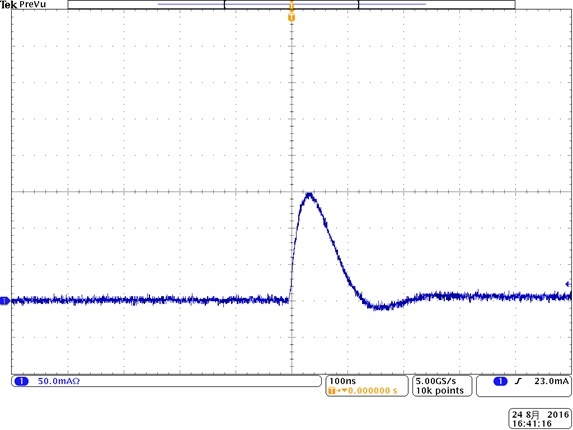Hi,
By noise measures, our customer added a condenser (4,700pF) to the line of the touch panel, but an inrush current in this way becomes about 150mA/100nsec.
With the data sheet of AM335x, the drive current of the TSC ADC lists it with up to 25mA.
TSC ADC pin flows through about 150mA/100nsec by an inrush current, will there be a problem?
The following inrush current is input.
Best Regards,
Shigehiro Tsuda



